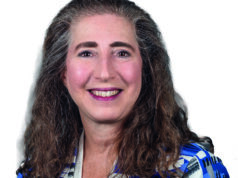
New Society for Vascular Surgery (SVS) President Ali AbuRahma, MD, put on an E. Stanley Crawford Critical Issues Forum at this year’s Vascular Annual Meeting (VAM) in San Diego focused on the role of multispecialty care in vascular and endovascular surgery, hoping to get at least some answers to the question: Can the competing specialties of the vasculature work together?
As the session unfolded on VAM opening day Wednesday morning, he got the perspectives of providers from three other specialties involved in treating vascular disease. AbuRahma himself declared: “Vascular providers must have defined, dedicated vascular and endovascular training during their formal residency or fellowship. Multispecialty practice, if feasible, will enhance and improve vascular care. We can work together, regardless of our differences, since we all share common goals, of providing care for vascular patients.”
Indeed, one of AbuRahma’s objectives with the forum was to highlight that those carrying out vascular procedures should be qualified to do so—and have the requisite competency and training.
He had earlier outlined how vascular surgeons were a minority in a crowded field of specialists who treat vascular disease, pointing out that the vascular surgical discipline is the only specialty dedicated to treating the totality of vascular disease.
Next at the podium was Mark Bates, MD, an interventional cardiologist who operates in the same multidisciplinary practice at West Virginia University School of Medicine/Charleston Area Medical Center in Charleston, West Virginia, as AbuRahma. Bates erred on the side of what’s possible: AbuRahma heads up a vascular center of excellence in West Virginia that the pair held up as a model others could possibly follow.“What are we doing well? I know there are maybe—perhaps—appropriate turf challenges out there around the country, but we are doing things together,” Bates said. “I think Dr. AbuRahma, in your leadership position—I’m looking forward to seeing some of these things come to fruition: Multispecialty guidelines; how we’re working together in training modules for people from different domains; looking at quality and outcomes.”
By coming together, “you’re going to accomplish more for the greater good, and not only your society, but for patients with vascular disease,” Bates added. When providers from the different specialties see young physicians who have a “particular passion” for helping vascular patients, more senior specialists should “extend a hand, and help pull them up into this space so they work together.”
James F. Benenati, MD, of Miami Cardiac & Vascular Institute and a former president of the Society of Interventional Radiology (SIR), provided perspective from the standpoint of an interventional radiologist in a multispecialty group.
“Why are we even discussing this?” came his opening gambit. “Is cooperation absolutely necessary? Well, we’re going to argue yes. But to start with, many of you are in your own practices. So, we could say that if you want to stay like that, you can. But you heard [Dr. AbuRahma] speak about the future, so for today—we’re in August 2021—you’re fine. Though I have the feeling in the next few years that’s going to change a lot.”
Physicians in many institutions are being commoditized, Benenati argued, “and the more we’re together, the more power we have.” The turf issues referenced by Bates, he said, can be eliminated—changing fee-for-service to quality outcomes. “When we eliminate turf, billing and what we make, and—if we can share in that—I think quality becomes a much bigger, important point for us, and patients do better.” In his world, Benenati found working together made his group more profitable; they could provide comprehensive vascular care; and they could standardize quality.
“We’re in a situation now, like [Dr. AbuRahma] says, where we need offense and defense,” he said. “Collaboration is one way, with multiple specialties, to accommodate a shortened workforce, prevent burnout and provide a better lifestyle for all of us. We can talk about the advantages of improving outcomes; doing more complex cases; cross-pollinization of training; the ability to be more efficient with procedure scheduling, cost-sharing; effective use of support services; taking money out of the conversation removes turf; and providing our administrators, regulators and patients with a comprehensive service line, with expertise in all areas.”
Representing interventional vascular medicine, Bruce Gray, DO, of the University of South Carolina in Greenville, made the case for combined, collaborative conferences between vascular medicine and vascular surgery, like the ones he once saw take shape in his world. “In these meetings, it was really helpful—we both learned to understand disease in the same way,” Gray said. “Even though it was an M&M conference, you understood the pitfalls and problems with some of our procedures. It put us on the same playing field with regards to understanding disease. Patients were co-admitted; we worked on them together; so when they’re in the operating room, and we’re rounding on the patient, and they have a potassium problem, a medication change, we take care of it; and if there’s a surgical issue, we notify them, they take care of it.”
It was a collaborative culture that cultivated mutual respect—leading to impacts not only in patient care but also research efforts. “Let’s learn to learn together,” Gray added.












